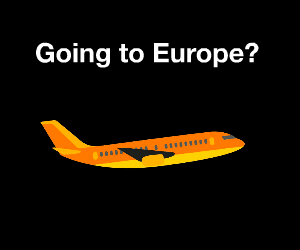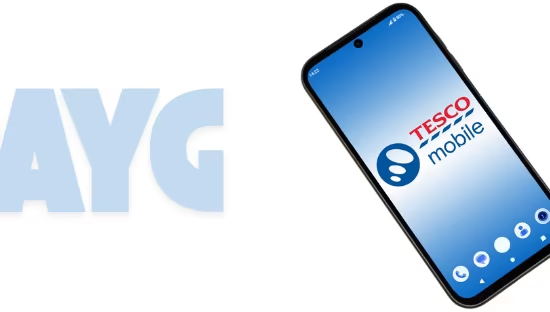
280 Million Travel eSIMs by 2030 — Opportunity or Threat for Operators?
CCS Insight’s latest Spotlight report shines a strong light on the accelerating rise of travel eSIMs — and it makes one thing clear: the disruption to traditional roaming revenues is no longer a hypothetical risk. It’s here, it’s scaling fast, and it’s forcing operators to confront hard choices about their role in the global connectivity ecosystem.
We often talk about how operators position themselves in the broader eSIM market, but in travel eSIM specifically, their role is becoming a central question.
From Roaming Goldmine to Consumer Headache
For decades, roaming was a predictable cash cow for mobile operators. Yet it also bred resentment. Horror stories of travelers unknowingly running up massive bills have been industry folklore for years. The EU’s “Roam Like at Home” regulation was a turning point in 2017, curbing abusive pricing within Europe; however, roaming fees remain punishingly high elsewhere.
CCS Insight rightly identifies eSIM as the true inflection point. With Apple pushing the technology aggressively and Android following suit, travelers are finding it easier than ever to sidestep their home carrier and download a travel eSIM in minutes. The consumer experience is smooth, transparent, and — most importantly—affordable.
A £15 travel eSIM offering 10 GB of data in the US versus £100 in roaming charges from a UK operator? That anecdote in the report says it all.
The Scale of Disruption
The numbers forecast by CCS Insight are striking:
- 280 million travel eSIMs provisioned worldwide by 2030, up from 70 million in 2024.
- Global travel eSIM sales surging from $1.3 billion to $4.4 billion over the same period.
The trajectory is clear—travel eSIM is not a niche; it’s becoming mainstream.
Opportunities Operators Can’t Afford to Miss
The report is spot-on in warning that operators risk repeating history. Telecoms have often been slow to react to disruption, watching tech specialists capture the momentum. Travel eSIMs could follow the same path if carriers treat them as just another defensive product to “protect roaming revenue.”
Instead, operators should ask themselves:
- How can we reposition travel eSIM as an extension of customer trust, rather than a threat to margins?
- Can operators build global offerings that compete head-on with travel eSIM specialists?
- Should telcos partner with eSIM aggregators or double down on owning the end-to-end customer experience?
- What role do branding, reputation, and retention play compared to short-term revenue preservation?
CCS Insight also notes that infrastructure ownership gives operators a built-in advantage. After all, every Airalo or Holafly still depends on the underlying network carriers’ control. The question is whether operators will leverage that strength strategically — or settle for being “the pipes” while others own the customer relationship.
What Happens Next?
Vodafone and Orange are already moving with their own travel eSIM propositions. But positioning will be everything. If these offers feel like watered-down roaming bundles, customers won’t bite. If they feel global, flexible, and digital-first, operators might just seize back the narrative. mobile operators and eSIM
CCS Insight is also right to point out that the current crop of travel eSIM specialists will face challenges as the market commoditizes. Differentiation will get harder, margins slimmer, and consolidation inevitable. But whether operators wait for that shakeout or move now to shape the market is the key strategic fork in the road.
Final Thoughts about Mobile Operators and eSIM
At Alertify, we see the travel eSIM story as part of a much larger trend: connectivity is shifting from being a locked, operator-controlled utility to a flexible, digital-first service shaped by customer choice. The parallels with fintech and digital banking are striking — just as Revolut and Wise forced banks to rethink cross-border payments, Airalo, Holafly, and Nomad are forcing telcos to rethink roaming. Both industries started with disruptors offering lower prices and simpler user experiences, and both are now seeing traditional incumbents cautiously respond with their own digital products.
The question is whether telecom operators will truly embrace this shift. Some, like Vodafone and Orange, have already dipped their toes into travel eSIM, while US carriers AT&T and T-Mobile are experimenting with multi-country packs. But the more telling sign comes from outside telecom: Apple’s decision to go eSIM-only in the US with the iPhone 14 — and potentially expanding that model — shows how quickly device manufacturers can change consumer expectations. According to GSMA Intelligence, over 8 billion eSIM-capable devices are expected to be in the market by 2030, meaning the infrastructure for mass adoption is already on its way.
Meanwhile, consolidation is already visible among travel eSIM players. Some aggregators are positioning themselves not just as consumer brands but as B2B infrastructure providers — similar to how fintech “as-a-service” platforms fuel neobanks. We expect a similar pattern here: a few consumer-facing giants, several niche providers, and a layer of infrastructure players powering both sides.
The CCS Insight forecast of 280 million travel eSIMs by 2030 is therefore not just a projection but a warning shot. Operators risk repeating the mistakes seen in music streaming, fintech, or cloud computing—waiting too long while agile startups capture customer loyalty. Those who move now, however, can position themselves not just to defend roaming revenue but to become global travel tech brands in their own right.
What CCS Insight does especially well here is framing travel eSIM not as a small adjunct to roaming, but as a full-fledged transformation of global mobile connectivity. The challenge—and opportunity—for operators is to move from a defensive crouch to a proactive stance.
The real conclusion is this: travel eSIM isn’t just about roaming disruption — it’s a test case for whether operators can evolve beyond borders and compete in a global digital services market. The winners will be those who treat it not as a defensive add-on, but as a foundation for the next era of mobile connectivity.
The open question is simple but urgent: will telcos take the lead in the travel eSIM era, or will they once again watch disruptors capture the high ground?










